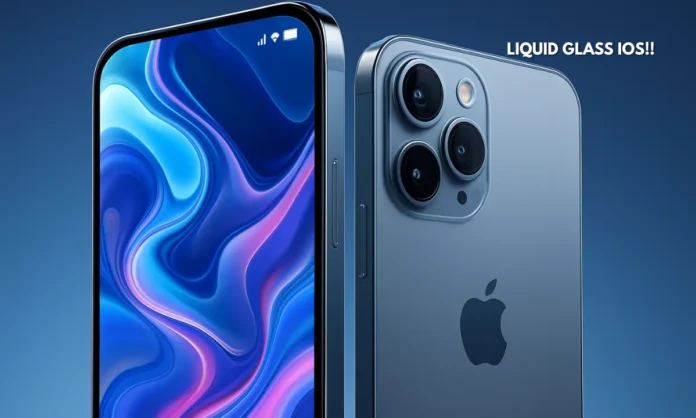Summary
- iOS 26 marks Apple’s first UI transformation since iOS 7, led by a new design language called Liquid Glass.
- The Developer Beta 1 is now available following its WWDC 2025 debut, with a public beta expected in July.
- Apple’s shift to annual numbering (iOS 26 from iOS 18) signals a simplified naming strategy aligning with calendar years.
A Bold Leap into Liquid Glass: What iOS 26 Says About Apple’s Future
In a move that redefines its mobile software identity, Apple has released iOS 26 Developer Beta 1, just 24 hours after its grand reveal at WWDC 2025 in Cupertino. More than just a software update, iOS 26 introduces a radical design shift dubbed “Liquid Glass”, representing the company’s boldest aesthetic evolution since the flat design revolution of iOS 7.
Equally noteworthy is Apple’s decision to drop incremental versioning in favor of a cleaner, year-based naming format—iOS 26 follows iOS 18, not 19—signaling a renewed branding philosophy that prioritizes clarity over legacy.
This early release allows developers to explore the underpinnings of the new OS, even though the version remains unstable and partially feature-locked. It sets the stage for a dramatic September rollout alongside the iPhone 17 lineup, where Apple’s vision of a more immersive and fluid user interface will finally take full form.
Apple rolls out Liquid Glass in iOS 26—basically Vista-era Aero redux, all flash and zero substance. I’m disabling further updates because what I’ve got now works just fine and doesn’t make me squint. #iOS26 #LiquidGlassFail pic.twitter.com/tqrDxNSAQ2
— Mukesh Kr (@mukeshxai) June 11, 2025
The Liquid Glass Interface: Apple’s Most Dramatic Redesign Since iOS 7
- Introduces Liquid Glass, a new design language emphasizing depth, translucency, and responsiveness.
- Signals Apple’s departure from the flattened look that defined iOS for over a decade.
- UI elements now dynamically respond to movement and ambient light.
- Core apps like Messages and Safari feature the first implementations of this redesign.
- Developers encouraged to adapt app interfaces to new design APIs.
The “Liquid Glass” interface is more than a visual refresh—it’s a philosophical shift in human-device interaction. Rather than lean further into minimalist abstraction, Apple has chosen to enrich the interface with refraction, depth, and kinetic feedback. Early previews show app windows that react to tilts and taps with lifelike fluidity, reminiscent of moving water under glass.
While only a few apps showcase this behavior in Beta 1, the underlying framework suggests a UI evolution designed not just for current phones but for mixed-reality compatibility and spatial computing. With Vision Pro expanding globally, this design alignment makes strategic sense.
Developer Access and Public Beta Timeline: How to Get iOS 26 Now
- iOS 26 Developer Beta 1 is available now for enrolled Apple Developers.
- Public Beta expected in July 2025, promising a more stable build.
- Enrolling in the Developer Program is now free at the basic tier.
- Download path: Settings > General > Software Update > Beta Updates > iOS 26 Developer Beta.
- Apple warns users to install betas only on secondary devices due to instability risks.
Getting your hands on iOS 26 today is easier than ever, thanks to Apple’s updated free developer tier. Users need only log in via the Developer app or website, complete the basic enrollment form, and skip the paid upgrade prompt. This democratization reflects Apple’s push for broader community feedback ahead of major launches.
Once enrolled, simply toggle beta updates in Settings to access the iOS 26 Developer Beta. However, Apple is clear—this version is not ready for daily use. Crashes, missing features, and UI inconsistencies abound. Most notably, some of the banner features shown at WWDC—such as AI-assisted Smart Replies and the redesigned Control Center—have yet to appear.
Why Apple’s Year-Based Versioning Strategy Matters Now
- Apple skips to iOS 26, aligning version number with calendar year.
- Ends speculation about feature-to-version correlations.
- Reinforces Apple’s vision of annual platform revolutions instead of incremental tweaks.
- Reduces confusion for consumers tracking major updates.
- Sets a new standard for software branding in a multi-device Apple ecosystem.
With the shift from iOS 18 to iOS 26, Apple is embracing the simplicity of year-synced software versioning—a model popularized by Microsoft and Android OEMs. For consumers, this eliminates guesswork around release cycles. For developers, it clarifies compatibility timelines across Apple’s growing device family, including iPads, Macs, and wearables.
Behind this branding move is a bigger message: Apple intends each iOS release to be a milestone, not just maintenance. By treating each update like a yearly event, the company draws focus to its long-term platform shifts—like Liquid Glass and AI-first experiences—rather than bug fixes or UI patches.
The Year of Liquid Glass: More Than Just a Visual Upgrade
Apple’s iOS 26 isn’t merely the next number in line—it’s a statement of intent. From a name that breaks with tradition to a UI that breaks with visual uniformity, iOS 26 is setting up 2025 as a pivotal year for Apple’s ecosystem coherence. While the Developer Beta only teases this transformation, it’s already clear that September’s full release will be one of the most talked-about software launches in recent memory.
And with Apple shifting toward more immersive, AI-powered, and visually expressive platforms, Liquid Glass might not just be an aesthetic—it might be the future of how we see, touch, and feel digital information.


